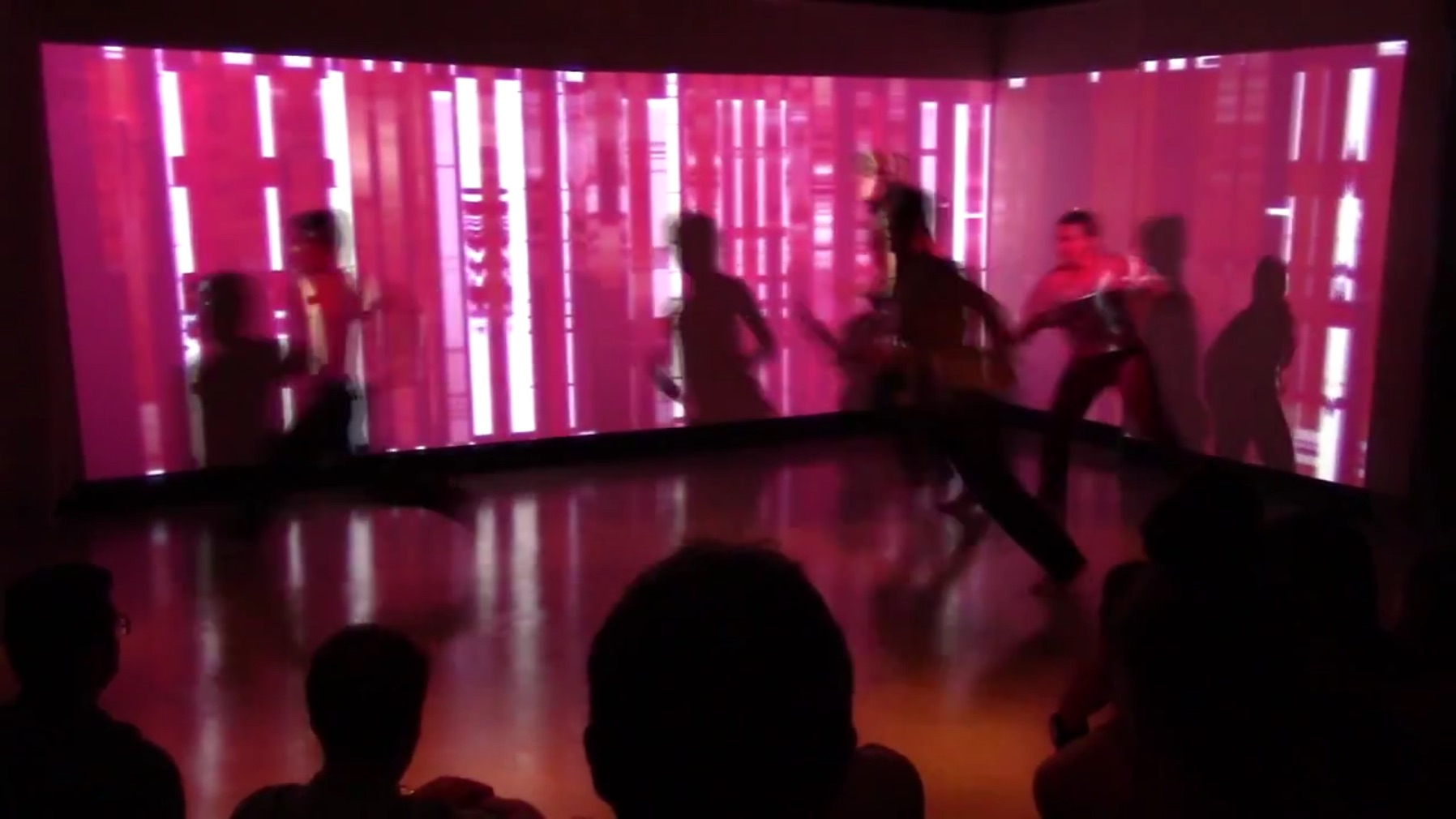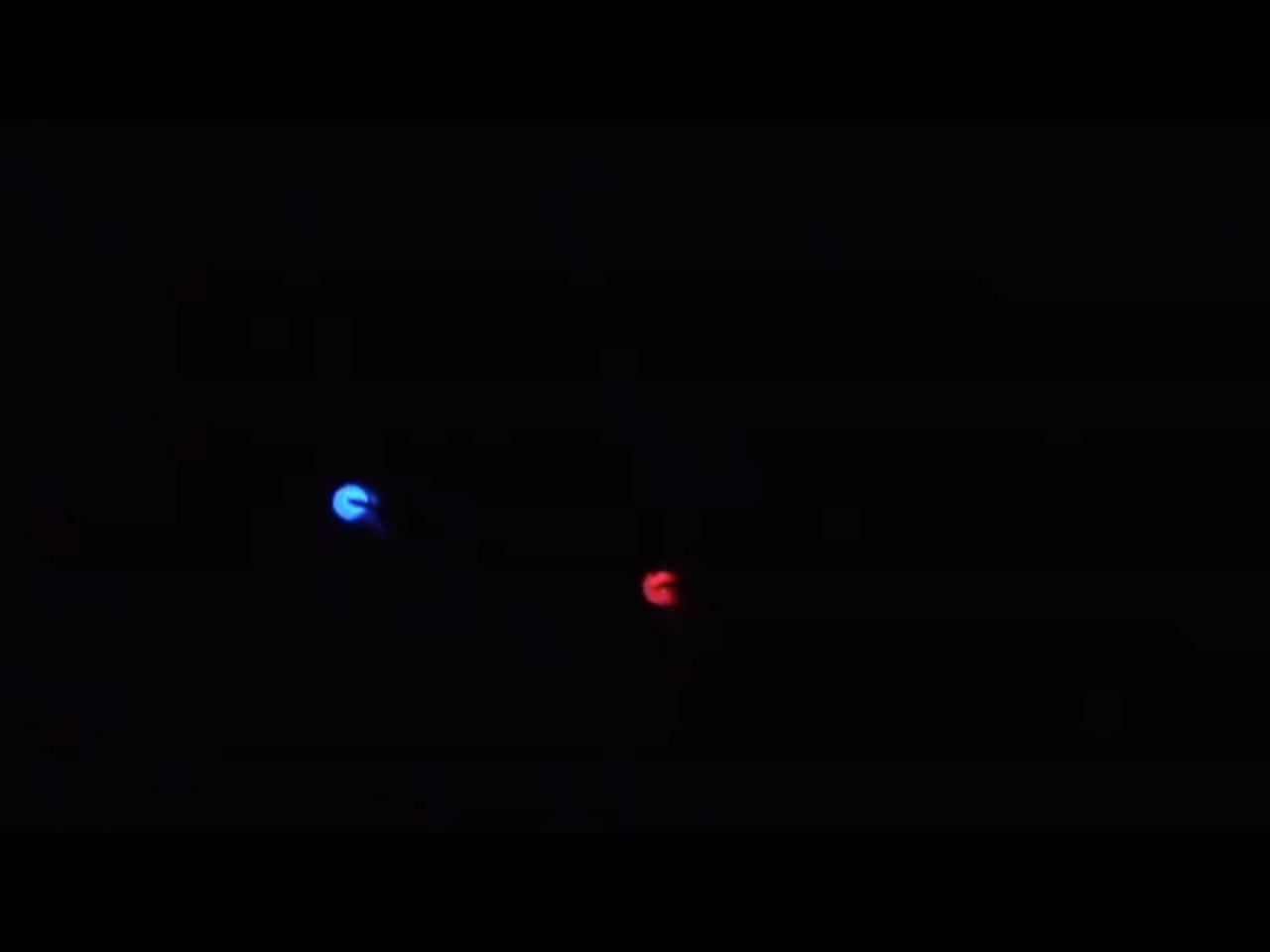
Fibres Out Of Line


Fibres Out of Line is an interactive art installation and performance for the 2021 Rhythm Perception and Production Workshop (RPPW). Visitors watched the performance, and subsequently interacted with the installation, all remotely via Zoom. It consisted of 10 robotic musical robots controlled remotely via video. More details about the setup here: https://michaelkrzyzaniak.com/Fibers_Out_Of_Line/.
Digital Vocabulary

Choreography: Varsha Iyengar
Music: Michael Krzyzaniak
Artistic Director: Anna Rebecca Harris
Additional Choreography: Lauren Bedal and Jen Gerry
Dancers: Sawako Gannon, Jen Gerry, Kai Abriol, Varsha Iyengar
Digital Vo//bulary is an iteration of an ongoing artistic collaboration between Varsha Iyengar and Michael Krzyzaniak. Born of the idea that interaction with digital interfaces limits physical expression, this piece 'loads' dancers into a digital-physical playground in which every moment of the wake-sleep cycle is monitored and influenced by digital devices, which the dancers - as subjects of observation and motion sensor input for the soundscape - periodically break free from, only to return to in perpetuity.
Hollow Roots Metallic Wind


Recombinant

Align55

Vertigo

Separation



Separation: Short Range Repulsion is a responsive dance piece written by Julie Akerly, Michael Krzyzaniak, Muharrem Yildirim, and Matthew Mosher. We wrote a paper explaining it in detail.
In our society, an individual's deviation from conventional social behaviour is both romanticized as a form of creative expression yet often quashed as a threat or annoyance. Separation: short range repulsion uses dance and reactive electronic noise to explore the dichotomous gradient between society's encouragement and rejection of social deviation. Dancers improvise synchronized flocking behaviour on stage. Because the dance is improvised, and there is no established leader, the dancers must continually examine each other for behavioural cues in order to maintain synchronicity. This arrangement is conceptually similar to the the Asch conformity experiments. A camera and computer vision software are used to analyze the flock's behavior, and measure its performance in real time. This information is used to control electronic noises and lighting. The noises and are inspired by sirens, and can have their timbre and texture varied continuously between simple / soothing and disorienting / threatening. These noises serve as social interpretations of individual dancers' deviation, or lack thereof, from the behavioural norms established by the flock. Eventually, as the norms grow in complexity, or as is dictated by the individuals' volition, the flock will fall apart. Once the software detects that this has happened, it will intervene, and use lighting cues to reestablish order amongst the dancers. The title is a reference to Craig Reynolds' original 'rules' of flocking behaviour.
In our society, an individual's deviation from conventional social behaviour is both romanticized as a form of creative expression yet often quashed as a threat or annoyance. Separation: short range repulsion uses dance and reactive electronic noise to explore the dichotomous gradient between society's encouragement and rejection of social deviation. Dancers improvise synchronized flocking behaviour on stage. Because the dance is improvised, and there is no established leader, the dancers must continually examine each other for behavioural cues in order to maintain synchronicity. This arrangement is conceptually similar to the the Asch conformity experiments. A camera and computer vision software are used to analyze the flock's behavior, and measure its performance in real time. This information is used to control electronic noises and lighting. The noises and are inspired by sirens, and can have their timbre and texture varied continuously between simple / soothing and disorienting / threatening. These noises serve as social interpretations of individual dancers' deviation, or lack thereof, from the behavioural norms established by the flock. Eventually, as the norms grow in complexity, or as is dictated by the individuals' volition, the flock will fall apart. Once the software detects that this has happened, it will intervene, and use lighting cues to reestablish order amongst the dancers. The title is a reference to Craig Reynolds' original 'rules' of flocking behaviour.
Here is a video of one complete performance at the New Earth Music Hall during the Slingshot Festival in Athens, Georgia. I wrote the music. The dancers are Julie Akerly, Eleanor Hanafin, and Denise Stein.
Orb


Avery Draut - Photography by Amanda Carlock
ORB was premiered in the "regex" exhibit at the Lamar Dodd School of Art at the University of Georgia in the summer of 2012, with Avery Draut dancing. Click the image below to see a short video clip taken from the two hour installation.
There was another musical piece running in the room next-door, which can be heard in the background. ORB's sound-world was designed with this in mind: It created a sort of disruptive friction that made stepping into ORB feel like stepping off the edge of the cosmos. Click the image below to hear a pristine version of ORB's sound world by itself.
The dancer is scarcely visible in the above video due to low lighting. Nonetheless, she was visible to the naked eye, and her ethereal movements added to the other-worldly feeling of the piece. Here are some screenshots from a video of her dancing in better light:
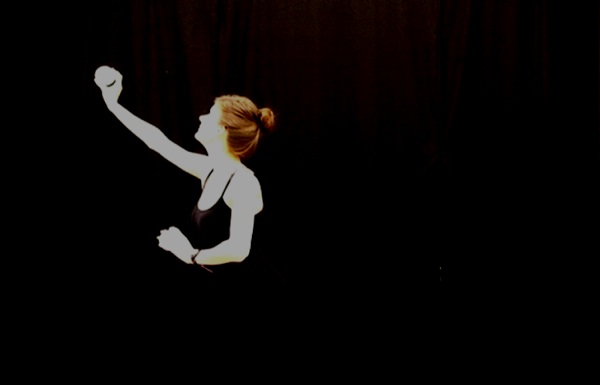
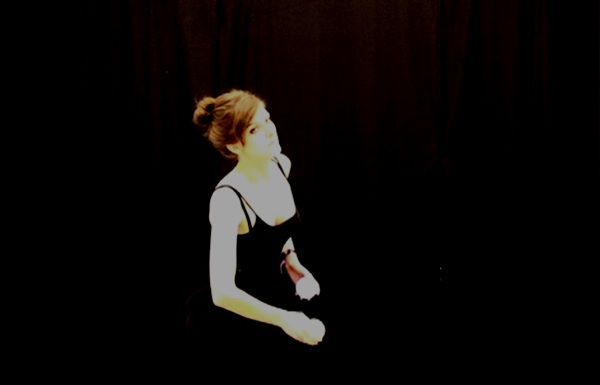
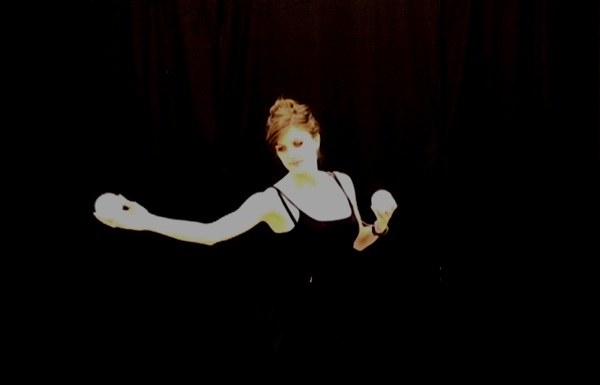
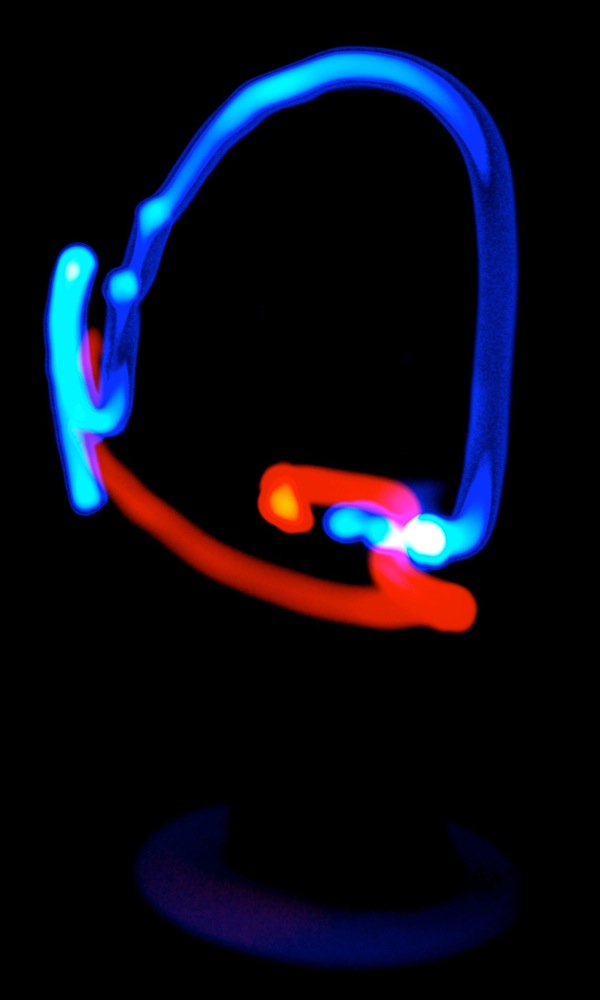
Avery Draut Dancing - Photography by Eric Marty
